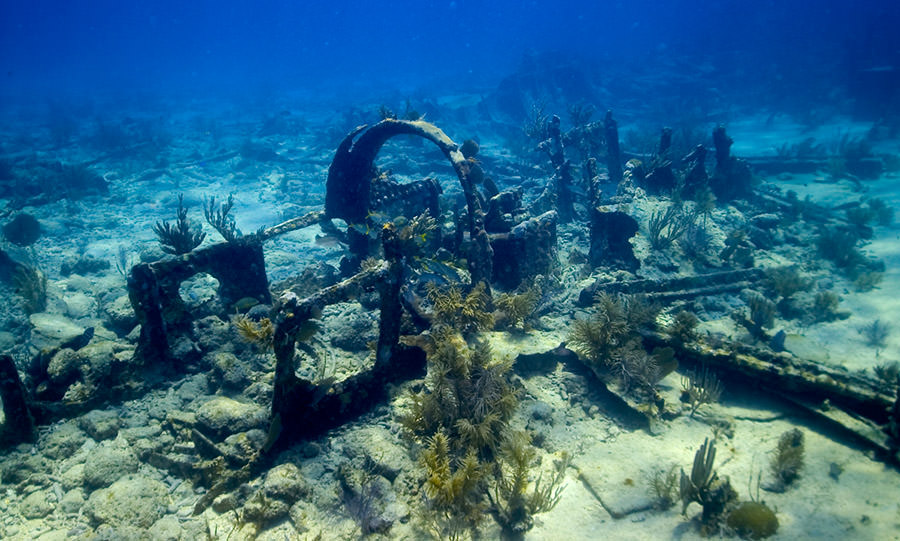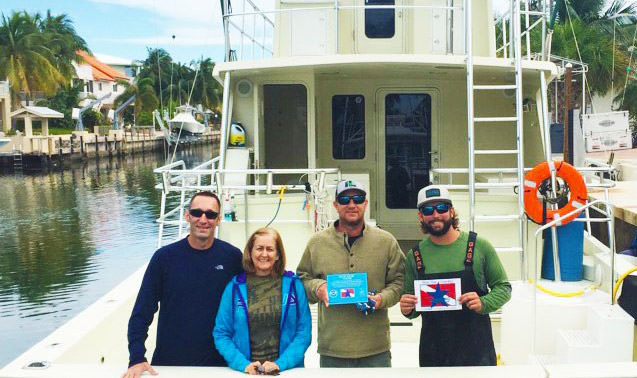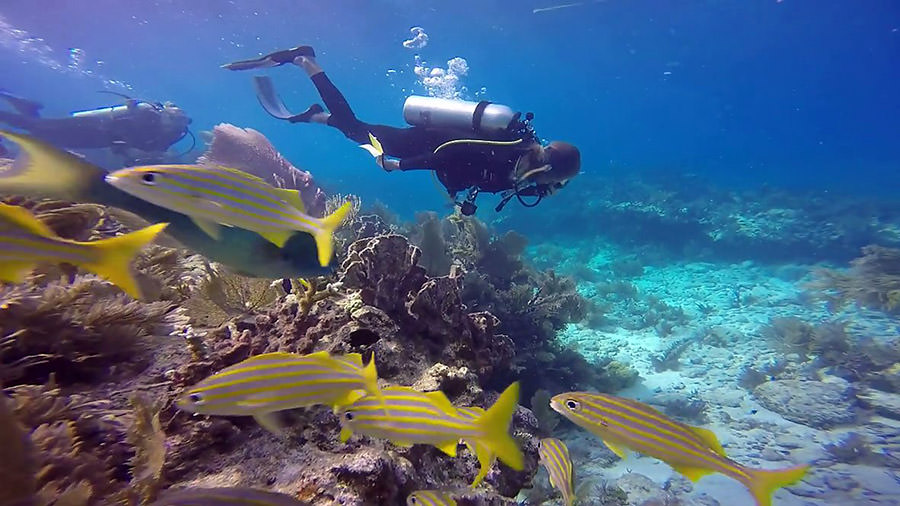5 Ways to Enjoy the Florida Keys While Protecting the Reef
By Abigail Engleman
May 2016
Florida Keys National Marine Sanctuary supports one of the most diverse assemblages of underwater plants and animals in North America. Here are five simple ways you can have a fantastic time visiting the sanctuary and protect it for future generations.
1. Explore the Shipwreck Trail

Florida Keys National Marine Sanctuary’s Shipwreck Trail is the final resting place for many historic shipwrecks, from military vessels to treasure fleets. These ships tell a story of the region’s maritime heritage and are part of a unique assortment of cultural resources protected within sanctuary waters.
Shipwrecks quickly become artificial reefs that lay the foundation for new marine habitats to form. These artificial reefs teem with life and history. By visiting them, you also help alleviate pressure from coral reefs by diffusing divers across multiple locations.
2. Book Blue Star

In partnership with local dive and snorkel operators, Florida Keys National Marine Sanctuary developed the Blue Star program to recognize businesses that go above and beyond to promote coral reef conservation. Operators that achieve the certification actively work to educate customers about the sanctuary and fragility of its reefs, while ensuring a memorable customer experience.
By choosing a Blue Star operator for your next adventure, you can rest assured that your experience will leave a lasting impression on you, but not on the reef! Look for the Blue Star logo on dive and snorkel charters’ websites, or choose from the list of Blue Star Operators here.
3. Keep your distance

Coral reefs are captivating and awe-inspiring, but while below the surface, remember the impact human contact has on the reefs. Maintain proper buoyancy and refrain from touching, kicking or standing on the coral. Keep all of your equipment secure, and establish a safe viewing distance from the reef and other marine life. Although typically unintentional, even minor interactions can have devastating cumulative impacts on reef sustainability -- remember, you are one of nearly 3 million visitors to the Keys each year, and everyone’s bumps and touches add up.
Marine life prefer not to be bothered by paparazzi, so if you’re photographing your experience, be considerate of your presence in this habitat. By being conscious of yourself and your equipment in the water, and keeping your distance from the reef and marine life, you can help keep coral reefs healthy.
4. Choose sustainable skincare options

Certain types of skin-care products contain chemicals that have negative impacts on corals and other marine life. Although we are encouraged to lather ourselves with sunscreen to protect our skin from the sun’s harmful rays, some chemicals become pollutants the moment we enter the water.
Protecting yourself from harmful UV rays is important, but choosing safer chemicals reduces impacts to marine life. Active ingredients such as oxybenzone (BP-3) and benzophenone can be toxic to corals, making it hard for coral larvae to survive and settle on substrates. Make a difference by opting for mineral-based alternatives such as zinc oxide or titanium oxide and relying on long sleeves, hats and shade to reduce the amount of sunscreen you need to protect yourself from the intense Florida sun.
Microbeads are another artificial additive to watch out for when you’re reading the label for skincare products. These tiny plastics are bad news for marine life, as they can be ingested by hundreds of species, including marine mammals, sea turtles and fish. The plastics can harm animals’ digestive tracts, causing cuts or inflammation. They can get lodged in stomachs and intestines, blocking up digestive systems and interfering with proper nutrition. As if that weren’t bad enough, microbeads have been shown to absorb organic chemicals that persist in the environment, such as polycholorinated biphenyls (PCBs). Many of these chemicals harm animals by accumulating in their livers and disrupting their endocrine system.
5. Share your experience with others

When you brag about your vacation in the Keys, pass on the word that this special place is protected as Florida Keys National Marine Sanctuary. You can actively promote awareness about what you saw and how you helped make a difference when you post photos to social media, and share memories with friends Tag your photos with #EarthIsBlue and remind the world how special the ocean is!

